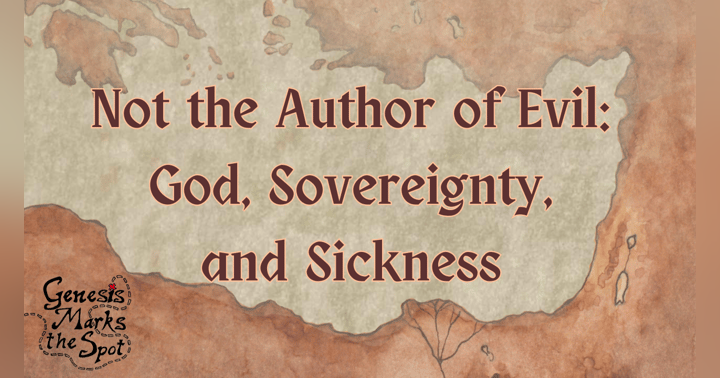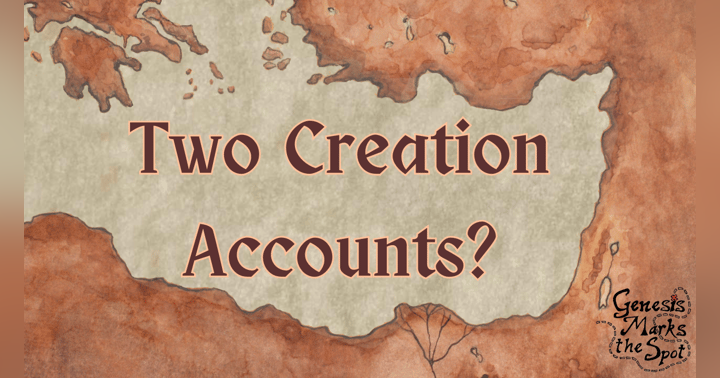Covenant to Canon: The Story Behind “Old” and “New Testament”

We toss around the labels Old Testament and New Testament like everyone’s always known what they mean—but have you ever stopped to ask where those titles came from? Behind these common terms lies a story of translation, theology, and the Church’s evolving understanding of the Bible’s shape and message.
Let’s unpack how these terms developed, from ancient covenants to canonical titles.
Covenant: The Biblical Root of “Testament”
The term “testament” didn’t originate as a title for a section of Scripture. It began as a theological word.
In the Hebrew Bible, the key term is בְּרִית (berit), meaning covenant--a relational agreement, often sealed with ritual. The covenant between God and Israel at Sinai is a central example (Exod 24:7–8).
When the Hebrew Scriptures were translated into Greek (the Septuagint or LXX), berit was rendered as διαθήκη (diathēkē). Now, this word can mean “covenant,” but more often in classical Greek it means “last will” or “testament.” The translators likely chose it because Greek lacked a perfect equivalent for berit, and diathēkē could carry legal and relational overtones, so hey it worked. It got the message across.
Then, in the New Testament, writers continue using diathēkē to talk about God’s relationship with his people, especially the new covenant established through Christ’s death and resurrection:
“He has made us competent as ministers of a new covenant, not of the letter but of the Spirit...”
—2 Corinthians 3:6 (cf. Heb 8:6–13, Luke 22:20)
So, at this point, we do have a contrast, and that is usually seen as between:
- Old covenant (Mosaic law and Sinai)
- New covenant (through Jesus, by the Spirit)
Of course, at the time of the NT…we don’t actually have the NT. So these covenant realities are talking about the conceptual realities of God’s relationship with his people. And of course we have the whole conversation about canon and the books of the Bible, but clearly there was no reason for any labels like “Old” or “New Testament" for books.
From “Covenant” to “Testament”: Latin Translation and Theological Shift
The key turning point came with Jerome’s Latin Vulgate in the 4th century. By then, of course, there were decided books that were sacred and that were part of what we call the canon. And there was a definite difference between books written before Christ and books written after Christ or as witnesses of Christ. The language surrounding the canon was still in development, however.
When translating the Greek diathēkē, Jerome consistently used the Latin word testamentum. Jerome didn’t make this translation gloss up, though his use of it was formative for the church.
But testamentum has a slightly different meaning than either berit or diathēkē: it primarily means a will--a document declaring how a person’s property should be distributed after death. It had legal connotations, not primarily relational ones. Of course distribution of property and inheritance is a big deal in the concept of covenant and relationship, but there remains a slight shift in how one might see a covenant in its original context vs a last will and testament.
While Jerome was simply following common Latin usage, his translation helped shape the way Western Christianity thought about the Scriptures. Now, because of this translation, the covenants were thought of in terms of testaments, not just relationships but documents. A covenant int the technical sense might include a document, certainly...but it was not reduced to that.
At any rate, here we get:
- Vetus Testamentum – the Old Testament
- Novum Testamentum – the New Testament
These weren’t yet book titles per se, but the vocabulary was in place, and it was sticky.
Canon and Usage in the Early Church
Now it’s true, the labels Old Testament and New Testament as names for Scripture collections actually predate Jerome. Already in the late 2nd and early 3rd centuries, church fathers were using the language of two “testaments” to organize and interpret Scripture.
One of the earliest examples is Tertullian (c. 200 AD), who refers to the Christian Scriptures as the Novum Testamentum, and the Hebrew Scriptures as the Vetus Testamentum. This seems to be a way to structure the canon.
“All Scripture is divided into two Testaments: the Old and the New.”
—Tertullian, Against Marcion 4.1
But as I said, this framework caught on quickly, as we’d really expect it would with a popular translation. (Translations do things like that, in case you didn’t know.) By the time of Augustine, the division of the Bible into two testaments--Old and New--was firmly embedded in Latin Christian thought.
Theological Weight During the Reformation
Then, we have some further shifts in theology. During the Protestant Reformation, theologians like Martin Luther and John Calvin embraced the labels “Old Testament” and “New Testament,” but not in the sense of these being opposites. They emphasized continuity between the two, just as we’ve been discussing lately in the podcast about covenant theology.
Calvin, for example, argued that there was one covenant of grace, administered differently across the testaments:
“The Old Testament has the same promises as the New, though more veiled.”
—Calvin, Institutes 2.10.2
So we see that the idea of testament and covenant is certainly not lost! But, of course, we know that continuity of relationship between technical-theological covenant and text division didn’t stay center stage in the minds of all theologians. In later Protestant traditions (especially dispensationalism) the terms started carrying more weight in the direction of discontinuity. The Old Testament became associated with an earlier dispensation (Israel, law) while the New Testament marked the start of something entirely different (the Church, grace)...and of course we know that there are some who want to shift that even harder.
Over time, this difference really began to settle into the popular imagination. Old started to sound like outdated, as if the first half of the Bible were just a warm-up act....Not necessary....We need to read about Jesus and the NT and it’s less important to read that old, fuddy-duddy stuff.
Modern Critiques and Alternatives
In recent decades, scholars and theologians and even pastors and preachers have raised concerns about the implications of these labels:
- The word “Old” can unintentionally suggest inferior, outdated, or replaced
- This can reinforce supersessionism—the view that the Church has replaced Israel and that the Hebrew Scriptures are no longer valid
- Jewish scholars and many Christians prefer terms like “Hebrew Bible” or “First Testament” to affirm the enduring value and witness of these writings
Some suggest moving back toward covenantal language--speaking of the Scriptures of the first covenant and new covenant in a way that maintains both continuity and respect. If you read much academic work, you’ll see reference to the Hebrew Bible (a term we use here, as well, from time to time), and sometimes that use means that someone is leaning hard into some ideas like thinking about the OT canon in a certain distinct order vs Protestant order. And sometimes that use is just a way to say “Old Testament” without the “Old,” or for some other reason.
At any rate, the labels Old Testament and New Testament have deep roots in biblical theology, translation history, and early church tradition:
- They began as terms for covenantal relationships (berit/diathēkē)
- Were shaped into legal terminology via Latin (testamentum)
- Became canonical categories in early Christianity
- And took on new meaning through Reformation theology and modern debates
What do we do with these changes and how should we prefer to use vocabulary that we are familiar with when we wonder if it’s accurately conveying information? Hopefully, these words and discussions invite us to reflect on how we think about Scripture, continuity, and God’s unfolding work in history. Sometimes we get into minor tiffs about terminology, but any way you slice it, it’s helpful to have some of this background.
The designation “Old and New Testaments” is a prestigious line of theology with a long and glorious tradition, but these terms might come with some added baggage and sometimes it’s useful to consider options…let’s just not get upset if others choose to use different terms, for their own reasons. Instead, get curious and ask why they use the ones that they do.








